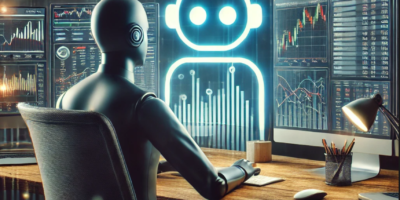In the trading world, milliseconds and mindset can make the difference between profit and loss. But beneath the fast data and flashing screens lies something less visible yet equally important: the ability to sustain deep focus. The same science that explains why traders perform best in calm, structured environments also applies to how anyone can improve concentration while working from home.
The fragile state of focus
Focus isn’t just a mental skill – it’s a biological state. When you enter deep focus, your brain reduces background processing and enhances activity in the prefrontal cortex. You become less aware of distractions, and more immersed in the task itself. Neuroscientists call this “flow”.
However, flow is fragile. Even minor interruptions – a notification ping, a door opening, or the wrong light intensity – can reset the brain’s attention cycle. It can take up to 23 minutes to fully recover from a distraction. For traders, that delay can be costly. For remote professionals, it’s death by a thousand cuts.
What trading setups can teach us
Professional traders build their environments to protect focus. Multiple monitors aren’t just about data visibility – they minimize the need to switch context. Ergonomic setups reduce physical strain that can pull attention away from the screen. Lighting is calibrated to prevent fatigue. Noise levels are controlled to keep the mind steady during volatile market hours.
Every detail is deliberate. The best setups are not about comfort for comfort’s sake; they’re about reducing cognitive friction so that all mental energy can be directed toward decision-making.
The same principles at home
Remote workers face the same challenge from a different angle. At home, distractions are constant and boundaries are weak. The brain can’t easily separate “work” from “life”, which keeps attention shallow and fragmented. The solution is not more willpower – it’s better environment design.
That’s why so many professionals are turning to dedicated backyard or modular workspaces such as OfficePodWA. These spaces are engineered to isolate sound, balance light, and create physical separation from home distractions. They serve the same role as a trading desk: a signal to your brain that it’s time to perform.
A small, well-designed pod can do for remote work what a multi-monitor setup does for trading – it establishes a predictable, stable environment where deep focus becomes the default state.
The physiology of calm performance
Studies on performance under pressure show that consistent environmental conditions lower cortisol (stress hormone) levels and support sustained cognitive performance. This is why traders train to remain calm during volatility, and why workspace design matters for anyone engaged in complex tasks.
Soundproofing, temperature regulation, and ergonomic consistency are not luxuries – they’re performance variables. The more consistent the physical environment, the less effort the brain spends adapting to it, freeing more bandwidth for reasoning and creativity.
Building systems that protect attention
Deep focus is not a mindset; it’s an engineered condition.
- Minimize context switching: just as traders keep their dashboards unified, workers should consolidate digital tools into one clean workflow.
- Control sensory input: light, temperature, and sound should stay within comfortable, repeatable ranges.
- Create boundaries: physical separation (even a few steps outside the main home) signals the brain that it’s time for analytical work.
Whether in finance or design, the structure of your environment defines the quality of your decisions.
Closing thought
The lesson from the trading floor is simple: performance thrives where distractions die. You don’t need to trade futures to benefit from that insight – anyone who works deeply can. By designing spaces and systems that protect focus, you build the conditions where smart decisions come naturally.
In the end, productivity isn’t about doing more. It’s about removing everything that gets in the way of clarity – from extra browser tabs to the background noise of everyday life.

















